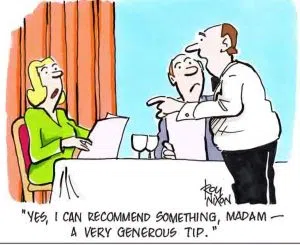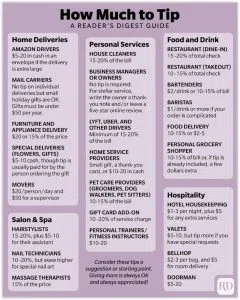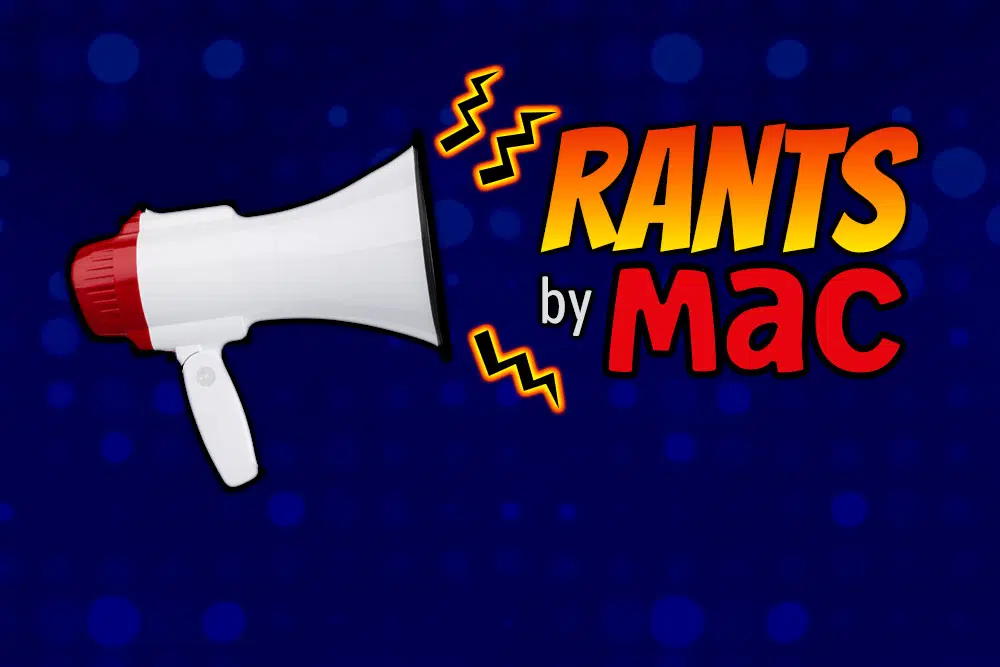The tipping culture is spreading — and some consumers are sick of it.
According to a Pew Research Center study, more Americans than ever are being asked to tip. Approximately 72% of those surveyed believe that tipping expectations are more widespread now than five years ago.

A suggested tip is often shown on iPad screens and receipts for services when presented to a consumer for payment.
And do you remember when those suggested tip amounts were 10, 12 or 15 percent? My bill at a nearby restaurant earlier this month included suggested tip amounts of 20, 25 and 30 percent. Really?
I don’t appreciate those suggestions, and I have the capability to calculate an appropriate tip amount without a cheat sheet. In fact, according to Pew’s findings, most American consumers resist those suggested amounts.
That being said, 92 percent of consumers confirm that they always or often leave a tip when frequenting a sit-down restaurant. Often? Waitstaffs depend upon tips for their income, so how do servers deal with that eight percent and the “occasional” tippers?
It is becoming more common for restaurants to add an automatic gratuity of 18-20 percent to the bill. If you fail to review the bill carefully, you may add your own tip, which is not only calculated on your food bill but also on the uplifted 20 percent that the server already added. Yikes!!!
Let’s calculate that out. On a $100 bill, if your server adds a 20 percent automatic gratuity, your cost at the table is $120. If you fail to notice the added gratuity, and then tip your customary 25 percent because you liked the service, your tip on the $120 is now $30, making your total tip $50, or 50 percent of your food bill.
I don’t really mind tipping for receiving decent services that I choose to utilize. In a sit-down restaurant, I tip 20-25 percent, if the service is competent and pleasant. If the server adds an automatic tip, I do not add to it, even if it’s a lesser amount than I normally would tip.
Restaurant costs, like everything else, are increasing. So, based upon normal tipping calculations, we are tipping more.
But why do we always apply a set percentage to our tips? When I go to a “nicer” restaurant, where the food is more expensive, does my server automatically deserve a bigger tip than when I stop by a local diner and pay much less for my meal? Does my server at a sandwich shop provide less service than his/her counterpart at the expensive venue?
I believe a tip should be based upon the service, and not the price of the meal. If I spend ten bucks for lunch, my server still must take my order, bring my food, refill my drink glass, deliver the bill, take the payment and be pleasant and competent through the entire process. So, why does she/he only get $2-3 for her effort, while the server at the overpriced restaurant would get significantly more for the same service? When I am overpaying for the food, is a larger gratuity automatically deserved?

So, let’s move on from restaurants, even though that’s the most common arena when thinking about tipping. Today we tip our Amazon driver, mail carrier, appliance delivery persons, florist, Uber driver, hairdresser/barber, dog walker, bartender and barista, hotel housekeeper, valet, doorman, bellhop and just about everyone that is willing to put their palm out.
When I worked in Manhattan, there seemed to be a doorman for every door, and that was 30 years ago. They wanted extra for hailing a cab, carrying your bag, or opening the door. It was costly to work on Madison Avenue.
Readers Digest posted a guide this year, which reinforces the increased expectations in the tipping world. It’s posted here.
Today, when you visit a coffee shop, convenience store, or even a self-checkout kiosk, you might be prompted on the checkout screen for a tip.
You can ignore the prompt, but many wonder “what do other people do?” People feel uncomfortable and pressured to comply with the suggestion. But, if you consider that you chose your purchases, you scanned them and rang them up, you made payment and bagged your items, what exactly would that tip be for?
And who is that money going to?
Curt MacRae is a resident of Coldwater, MI, and publishes opinion columns regularly.
Tweets @curtmacrae — comments to rantsbymac@gmail.com






Comments